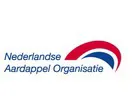The Netherlands' development as an agricultural country and retaining enough farmland. And ensuring potatoes remain in Dutch consumers' minds. According to Dick Hylkema, director of the Nederlandse Aardappel Organisatie (NAO), the sector organization for seed and consumption potato trading, these are the Dutch potato sector's greatest challenges.
 Dick Hylkema
Dick Hylkema
Two very different aspects, with the common denominator that both need to be brought to the public's attention, he says. Awareness around potatoes, potato chains, and their importance is noticeably waning. "The trade sector staunchly supports sufficient cultivation acreage in the Netherlands; things like the Nitrates Directive, nitrogen issues, and general area pressure are putting the available acreage under pressure. Adding potato acreage for the industry and seed potatoes is already happening outside the country. That, in itself, isn't a bad thing because you cannot expect unlimited acreage in the Netherlands. But, the country must maintain robust potato cultivation, too," begins Dick.
Stong sector
"We're a strong sector regarding breeding, logistics, processing, trade, and research institutions. Not to mention the government-supported export role via the Ministry of Agriculture, Nature and Food Quality, Netherlands Food and Consumer Safety Authority, and the Agricultural Council network. The country could, thus, play a vital role in Europe and worldwide. But if cultivation comes under more pressure, that will become increasingly difficult because, without cultivation, the Netherlands won't have the chains or the know-how." Dick notes that chain cohesion - an aspect that requires attention - is essential for the sector's strength.
"It seems - in the government, too - that this context is being lost. Potatoes are the world's third largest food crop. It's also sustainable because you need little water to grow them. So, this product is increasingly attracting attention internationally. The Netherlands has a leading global position regarding potatoes and knowledge about them. We must cherish that, and we must remain known to have that role. People must be aware that potatoes also grow in the Netherlands and that that's pertinent for chain cohesion. Along with organizations like Vavi and BO Akkerbouw, we're showing the government that arable farming is a modern industry, which is also internationally significant," says Dick.
Lower volume
This modern industry, however, remains dependent on climate conditions. Dry weather, then abundant rainfall, following a cold, wet spring, slowed crop growth, with lower yields expected. "We thought we hit a low last year, volume-wise, but it appears it's going to be far lower still this year. We're anxious to see what that will look like at harvest.” Hylkema expects the possible lower volume to put even more pressure on a market already under pressure. "Sales in the French fries industry keep climbing. As a result, raw materials are in short supply, even more so now," he says.
Dick adds that the French fry potato acreage is a bit larger this season. He attributes that to the higher contract prices French fry factories offered. "More growers have, thus, chosen French fry potatoes, slightly decreasing the seed potato acreage. There's some noticeable competition between crops. I don't know if that's structural. It also has to do with current season prices." Given the increased costs, Dick calls the rising prices for growers logical. "It's good to see a grower price correction, the market doing its job, and supply and demand coming together," he explains, pointing out that potato market prices - including for ware potatoes - are high.
Power to the Pieper
What precisely these price increases will mean for consumers is still unclear. Dick thinks it will put some pressure on prices, adding that there are several reasons to keep potatoes on consumers' minds. NAO and some 30 trading companies have been doing that since 2014 via the 'Power to the Pieper' campaign. "We use this to try to keep the focus on potatoes in the Netherlands. The campaign particularly appeals to young families and wants to remind them that potatoes are a healthy, sustainable, and yet fairly easy-to-prepare product."
Dick is, nevertheless, under no illusion that this campaign can increase Dutch potato consumption; the budget is simply not big enough for that. Still, NAO considers the declining consumption as a reason to keep that focus on potatoes. That is done through social media and increasingly PR campaigns, like the National Potato Grubbing Day. That started with a single grower two years ago; this year, on September 2, nine growers are inviting people to their fields to harvest potatoes and gain knowledge about this product.
Unaware
"Plenty of people join in, and it's great for regional publicity. We want to expand that in the future," says the director, who thinks that is crucial since many Dutch consumers are entirely unaware that food is being grown in their backyard. Chilled potato sales, though, remain far more stable than the table potato segment. "Ready-to-eat meals aren't included in consumption figures. That makes us slightly less pessimistic, but the sector still needs much attention," Dirk concludes.
 Voor meer informatie:
Voor meer informatie:
NAO
nao@nao.nl
www.nao.nl

